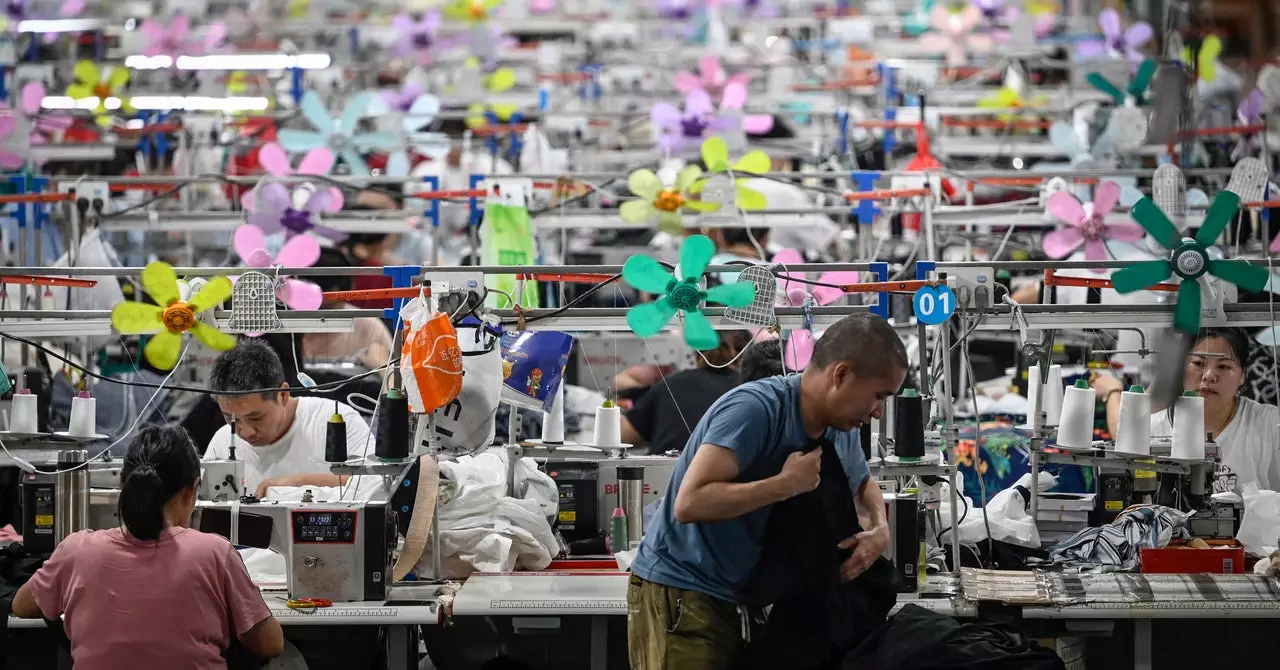In 2023, Shein has emerged as a dominant player in the fast-fashion arena, its presence indisputable across social media platforms and global markets. This China-based retailer has harnessed the art of ultra-affordable clothing production to capture the attention of millions, particularly among younger generations. The #sheinhaul phenomenon, characterized by influencers showcasing their latest Shein finds, has transformed into a viral marketing technique, generating billions of views and making the brand a near household name. Shein’s business model relies on a vast network of suppliers, enabling them to deliver trendy apparel across 150 countries, epitomizing convenience in consumerism.
The sheer volume of data generated in this process is staggering. With each transaction, shein is not just selling clothes; it’s compiling intricate details of customer preferences and buying patterns. The company’s adept use of data analytics allows it to stay ahead of the trends and fulfill consumer desires more swiftly than traditional retailers ever could. This data-centric approach, propelled by innovative AI technologies, fuels not just sales but the very heartbeat of Shein’s operational strategy.
The integration of advanced AI technologies into the fast-fashion framework has revolutionized how brands like Shein interact with their customer base. By utilizing proprietary machine-learning algorithms that forecast demand, Shein is able to optimize its supply chain, effectively minimizing lead times and offering styles that resonate with current trends. This model of production is certainly appealing to consumers who crave the latest fashions on a budget, but it raises critical questions about sustainability.
Despite Shein’s promises to reduce carbon emissions by 25% by 2030 and strive for net-zero emissions by 2050, environmental advocates highlight the inherent contradictions in their operations. The commitment to sustainability stands in stark contrast to the rapid nature of fast fashion manufacturing, which produces immense carbon footprints due to extensive logistical requirements and resource extraction. The potential for AI to accelerate the production of cheap clothing, while marketed as a benefit, paradoxically promotes more consumption and waste, leading to larger ecological repercussions.
An alarming statistic from Shein’s recent sustainability report reveals that the company actually doubled its carbon dioxide emissions from 2022 to 2023, a development that has stirred outrage among environmental groups. The figures are alarming, with Shein reportedly emitting over 16.7 million metric tons of CO2 in 2023—equivalent to the output of four coal power plants annually. Such revelations challenge the effectiveness of Shein’s sustainability claims and underscore the immense ecological cost intertwined with its business ventures.
Shein’s reach is not confined to carbon emissions; it encompasses a broad spectrum of environmental concerns, including textile waste and microplastic pollution. As the company introduces an estimated 10,000 new products daily, the lifecycle of these garments often concludes with them being discarded rather than recycled. This fast apparel consumption leads to staggering amounts of waste, posing dire threats to ecosystems and waterways. Furthermore, reports of labor exploitation within Shein’s supply chains cast a shadow over its practices, calling into question the ethical implications of such a rapid production model.
As one of the frontrunners in the rapidly evolving world of fast fashion, Shein exemplifies the complexities of modern consumerism. The fusion of AI and fast fashion has undoubtedly enhanced operational efficiencies and consumer accessibility, yet it creates a precarious balance between profitability and environmental stewardship. The mounting criticism from climate advocates reflects a growing recognition of the unsustainable nature of Shein’s business model.
Moving forward, it remains imperative for Shein and other fast-fashion brands to reconsider their operational practices. Transitioning toward a model that prioritizes sustainability over sheer volume could lead to a more responsible form of consumption, satisfying consumer desires while mitigating environmental damage. The challenge lies in reconciling the allure of instant gratification with the urgent need for ecological mindfulness—an endeavor that will define the future of fashion in a world increasingly aware of its environmental impact.


Leave a Reply